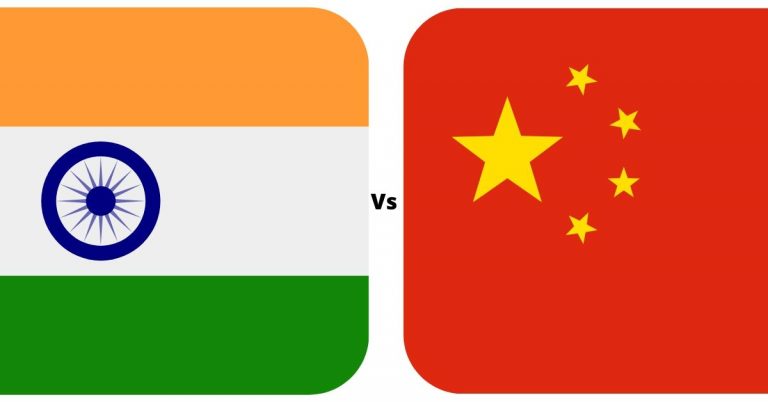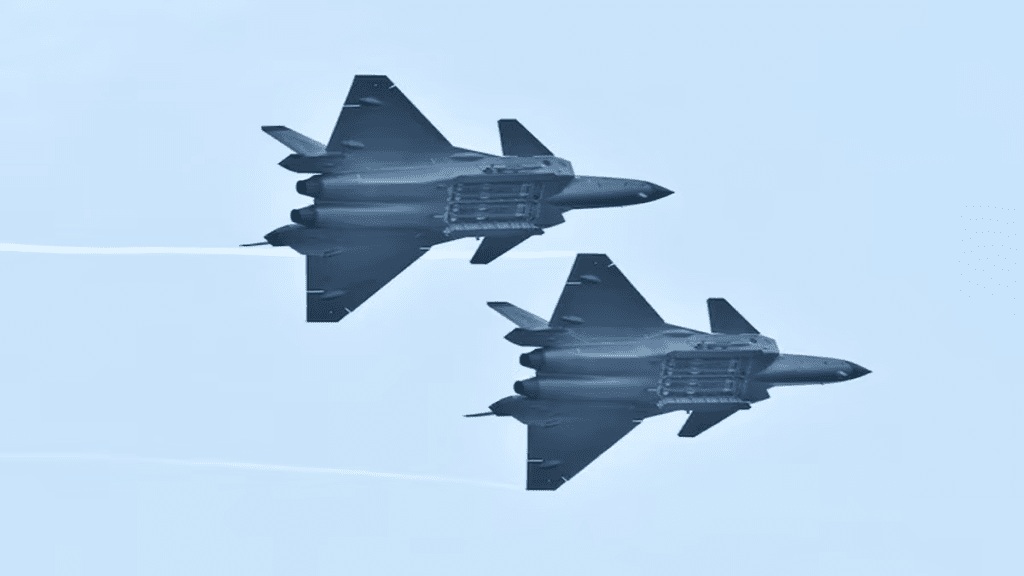- News
- Updated on March 31, 2025
Can India defeat China in war? | Military Strength of both countries in 2020

In recent years, tensions between India and China have been on the rise, especially along the shared border in the Himalayan region. The question of whether India can defeat China in war has stirred discussions across political, military, and civilian circles. To understand the dynamics of such a conflict, it’s essential to delve into the military capabilities of both countries, including their armed forces, technology, resources, and strategies. In this blog, we will compare the military strength of India and China and analyze whether India has the potential to defeat China in war.
Overview of the Military Strength of India and China
When it comes to military might, China and India are two of the most powerful nations in Asia, both having large, well-equipped, and well-funded armed forces. However, despite the shared geopolitical interest in maintaining regional stability, both nations possess significant military differences. Understanding these disparities is key to answering the question of whether India could defeat China in war.
China’s Military Strength
China’s military, officially known as the People’s Liberation Army (PLA), is one of the largest and most powerful in the world. The PLA has undergone significant modernization in recent years, with a focus on technological advancements and increasing its strategic reach. The key strengths of China’s military include:
- Personnel and Size: China boasts one of the largest standing armies in the world. With approximately 2 million active-duty military personnel, the Chinese army is the largest in terms of manpower. This provides China with a significant advantage in terms of resources and logistical support.
- Technological Advancements: China has made significant strides in modernizing its military technology. The country has developed advanced weapons systems, including stealth fighter jets, unmanned aerial vehicles (UAVs), and ballistic missile systems. The Chinese military also possesses one of the world’s largest fleets of naval vessels, including aircraft carriers, submarines, and destroyers.
- Nuclear Capabilities: China has a robust nuclear arsenal, estimated to have over 300 nuclear warheads. The country has also made advancements in the development of nuclear-powered submarines and intercontinental ballistic missiles (ICBMs), enhancing its strategic deterrence capabilities.
- Air Power: The Chinese Air Force is equipped with modern fighter jets, such as the J-20 stealth fighter, and advanced bombers like the H-6. These air assets provide China with air superiority in regional conflicts.
India’s Military Strength
India, with its rich history of military conflict and defense innovation, also possesses a formidable military. The Indian Armed Forces consist of three branches: the Indian Army, the Indian Navy, and the Indian Air Force (IAF). While India’s military is not as large as China’s in terms of personnel, it is highly capable, versatile, and well-positioned for regional defense. India’s military strengths include:
- Personnel and Size: The Indian military, with over 1.4 million active-duty personnel, is one of the largest standing armies globally. While smaller than China’s in terms of sheer manpower, India’s military is still formidable and strategically equipped.
- Technological Development: India has invested heavily in modernizing its defense systems, especially in missile technology, aircraft, and naval capabilities. The Indian Army has a strong focus on technological integration with systems like the BrahMos supersonic cruise missile, which can be launched from various platforms.
- Nuclear Capabilities: India is a nuclear power with an estimated 150–160 nuclear warheads. The country’s nuclear capabilities are seen as a significant deterrent, especially considering the longstanding tension with Pakistan and China.
- Air Power: India’s Air Force is equipped with a mix of Russian and Western-made fighter jets, such as the Sukhoi Su-30MKI and the French Rafale. India’s air superiority is bolstered by the development of indigenous aircraft, including the HAL Tejas.
- Naval Power: The Indian Navy has a growing fleet of modern warships, submarines, and aircraft carriers. India’s naval strategy focuses on securing its maritime interests in the Indian Ocean region, a vital area for trade and security.
Comparative Military Strength: India vs. China
While both India and China have powerful militaries, there are several key differences that determine their overall military strength. Below is a comparative analysis of various military components.
1. Land Forces
China’s large army gives it a significant advantage in terms of land forces. The Chinese People’s Liberation Army Ground Force (PLAGF) is equipped with advanced tanks, infantry fighting vehicles, and artillery systems. India, on the other hand, has a smaller but highly skilled army, with extensive experience in terrain warfare, especially in the Himalayan region. The Indian Army’s primary strength lies in its well-trained troops and effective use of terrain for defensive operations.
However, in terms of sheer numbers and equipment, China has the upper hand when it comes to land forces, especially in large-scale conventional warfare.
2. Air Power
China’s air superiority is a major factor in its military dominance in the region. With advanced fighter jets like the J-20 and J-10, China can rapidly deploy air forces for offensive operations. China also has an extensive network of air defense systems, including the HQ-9, capable of countering air threats from enemy jets.

India’s Air Force is strong, but it faces challenges due to limited numbers of advanced fighter jets compared to China. However, India’s Rafale jets and Su-30MKI fighters are among the best in the world. Additionally, India has invested in modernizing its air force, with a focus on developing more indigenous aircraft, which could help in the long term.
3. Naval Power
China’s naval force is arguably the most significant military advantage China holds in the Asia-Pacific region. With over 300 ships, including aircraft carriers, submarines, and destroyers, the Chinese Navy (PLAN) is rapidly expanding and modernizing. This gives China the ability to project power far beyond its shores.
India’s navy is smaller but increasingly sophisticated, with advanced submarines, aircraft carriers, and frigates. India has been focusing on maritime defense, especially in securing its interests in the Indian Ocean. While the Indian Navy cannot match China’s naval assets in terms of size, it is strategically positioned in an important region.

4. Nuclear Capabilities
Both China and India are nuclear powers, but China’s nuclear arsenal is significantly larger. China has over 300 nuclear warheads, while India has about 150–160. China also possesses long-range ICBMs and submarine-launched missiles, giving it a strategic advantage in terms of nuclear deterrence. However, India’s nuclear capabilities serve as a potent deterrent against China, ensuring that both countries are unlikely to engage in full-scale war due to the catastrophic consequences.
5. Logistics and Strategic Mobility
China’s vast resources, both in terms of manpower and infrastructure, give it a logistical advantage. China can rapidly mobilize troops, equipment, and resources to any conflict zone, thanks to its well-developed transportation networks and military infrastructure.
India’s logistics capabilities are improving, but it faces challenges due to its geography, especially with the mountainous terrain along its northern border. However, India’s military has a proven track record of operating in difficult environments, particularly in high-altitude areas like the Himalayas.
Can India Defeat China in War?
While it is clear that both countries possess formidable military capabilities, the question of whether India can defeat China in war is complex. In a direct conventional war, China would likely have the upper hand due to its larger army, more advanced air power, and superior naval assets. However, several factors come into play:
1. Geography and Terrain
India’s advantage lies in its knowledge of the terrain, especially in the Himalayas. This could prove to be a significant factor in any prolonged conflict, where China’s larger forces might be hampered by the difficult terrain.
2. Nuclear Deterrence
Both India and China possess nuclear weapons, and the presence of these arsenals would likely prevent either country from engaging in full-scale warfare, as the threat of nuclear escalation is a powerful deterrent.
3. Strategic Alliances
India has strategic partnerships with countries like the United States, Russia, and several European nations, which could provide support in the event of a conflict. China, too, has its allies, but India’s strong diplomatic relations provide it with a significant strategic advantage.
Conclusion
While China is militarily superior in many aspects, particularly in terms of size, technology, and naval power, India’s strong strategic positioning, combat experience, and nuclear deterrence make it a formidable opponent. A direct war between India and China would have devastating consequences for both nations, and given the modern realities of nuclear warfare, it is likely that diplomacy would prevail over direct conflict. However, in a conventional military confrontation, China would likely have the upper hand. The answer to whether India can defeat China in war remains uncertain, as it depends on multiple variables, including international alliances, military strategies, and the political landscape at the time of any conflict.
Also Read : India elected non-permanent member of UN Security Council
Join the discussion
Related Articles
No results available
ResetTrending Articles


- General
- Updated on December 11, 2025


- General
- Updated on December 11, 2025


- General
- Updated on December 11, 2025


- General
- Updated on December 2, 2025


- General
- Updated on December 5, 2025


- General
- Updated on November 27, 2025


- Health
- Updated on November 24, 2025


- General
- Updated on November 24, 2025


- General
- Updated on November 19, 2025


- General
- Updated on November 19, 2025
No results available
Reset


